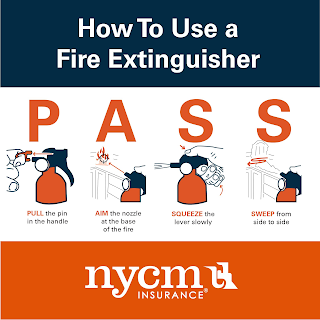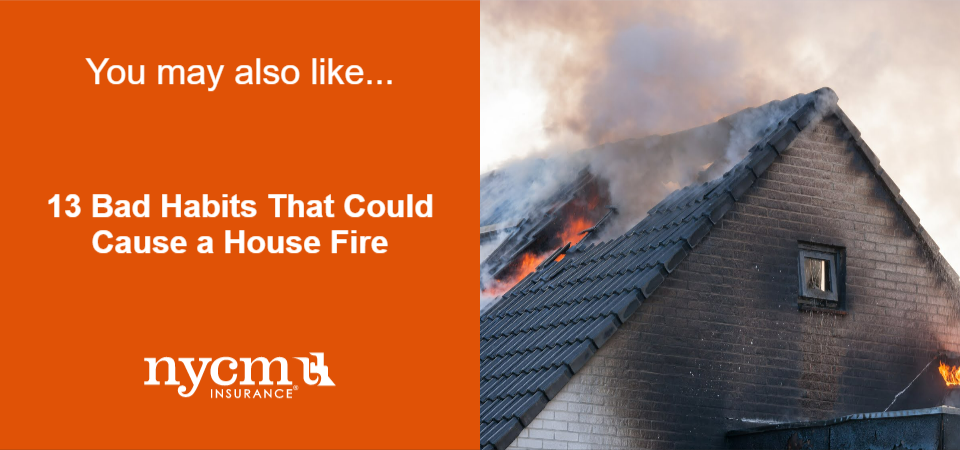Fire Extinguisher Safety

Read
Our Comprehensive Guide to Fire Extinguisher Safety!
When a fire starts unexpectedly, having a fire
extinguisher close by can make all the difference between a quick scare or a disaster. Owning a fire extinguisher, or
multiple, can give you the peace of mind of knowing that you have the tools to
act should a small fire ever start in or around your home or vehicle.
Before using a fire extinguisher, it’s
important to understand when it’s safe to try to put a fire out yourself. You
should also familiarize yourself with how to use your fire extinguisher and to
be aware of when it’s time to replace it. This will ensure the extinguisher
works as intended in case you need to use it.
Continue reading to learn the answers to 5
common questions about fire extinguishers!
When
Should I Use a Fire Extinguisher?
Making sure your fire extinguishers are easily
accessible and knowing how to use them can save lives and property. Before you
use a fire extinguisher, the U.S. Fire Administration (USFA) recommends
that people first confirm some important questions:
●
“Have I alerted others in the building that there’s a fire?
●
Has someone called the fire department?
●
Am I physically able to use a fire extinguisher?
●
Is the fire small and contained in a single object (like a pan or a
wastebasket)?
●
Am I safe from the fire’s toxic smoke?
●
Do I have a clear escape route?”
USFA guidelines state that if the answer is
“yes” to all of these questions, then the situation warrants the use of a fire
extinguisher. If you cannot answer “yes” to all of these questions, it is
recommended to alert others, leave the building, and call 911 as soon as
possible. Always remember that being able to safely evacuate the building should be your
number one priority.
How Do I
Use a Fire Extinguisher?
If you are in a situation where the use of a
fire extinguisher is warranted, being familiar with your extinguisher ahead of
time will help you understand how to deploy it if the time comes. The USFA
recommends that people use the acronym of PASS
as a memory tool for how to use a fire extinguisher:

When it comes to using a fire extinguisher, it
may only be effective if used properly and during its active lifespan. To
ensure this, you will want to perform regular inspections of your fire
extinguishers.
How Can
I Inspect My Fire Extinguisher?
The National Fire Protection Association (NFPA)
recommends fire extinguishers should be inspected at home every
month. To complete a fire extinguisher inspection, here are some
things you will need to check:
●
Is the extinguisher located in an
optimal spot?
If you cannot
quickly and easily access your fire extinguisher, it should be moved to another
location. Consider placing extinguishers in higher risk areas, such as near
your stove, dryer, or grill. Pro-tip: Have at least one fire extinguisher on
every floor of your home.
●
Is the pressure gauge in the
green?
In order for your
extinguisher to function properly, it needs to be optimally charged with the
right amount of pressure. If your extinguisher’s gauge is showing in the red,
you will need to replace it.
●
Is the extinguisher damaged?
Check the fire
extinguisher’s can, nozzle, and hose area for damage or rust. Clean and shake
your extinguisher when completing the inspection to test for any leaks.
●
When was the last time my fire
extinguisher was inspected by a professional?
When you complete
your at-home inspections, check the date
on the maintenance tag to see when it was last inspected by a professional. The NFPA
recommends that all fire extinguishers should be inspected by a professional
both upon initial installation and once a year.
When Do
Fire Extinguishers Expire?
The life expectancy of fire extinguishers can
vary based on a number of factors, but many manufacturers state that disposable
fire extinguishers should be replaced about every 10 years. By
having a professional conduct annual fire extinguisher inspections, you can
also have the added safety of relying on their expertise to know when it is
time to replace the old with the new.
Which
Fire Extinguisher Should I Use?
You may have noticed that different fire
extinguishers have different letters of A, B, C, or D on the label. These
letters indicate what fire class – or what kind(s) of fire – an extinguisher is equipped to put out:
●
Class A extinguishers are suitable
for fires of ordinary combustible material, like wood,
fabric, rubber, paper, and also plastic materials.
●
Class B extinguishers are suitable
for fires of flammable and combustible liquids, petroleum greases, oils,
alcohols, and flammable greasants.
●
Class C extinguishers are only
suitable for fires involving energized electrical equipment.
●
Class D extinguishers are used on
fires dealing with flammable or combustible metals.
Some fire extinguishers are multi-purpose and
may be printed with more than one letter. Depending on the kind of fire
extinguisher you purchase, the extinguishing agent within will vary in order to
best put out various substances.
In the right hands, a fire extinguisher can be
a huge aid in preventing a catastrophe. Click below to learn
about 13 bad habits that run the risk of a house fire.




